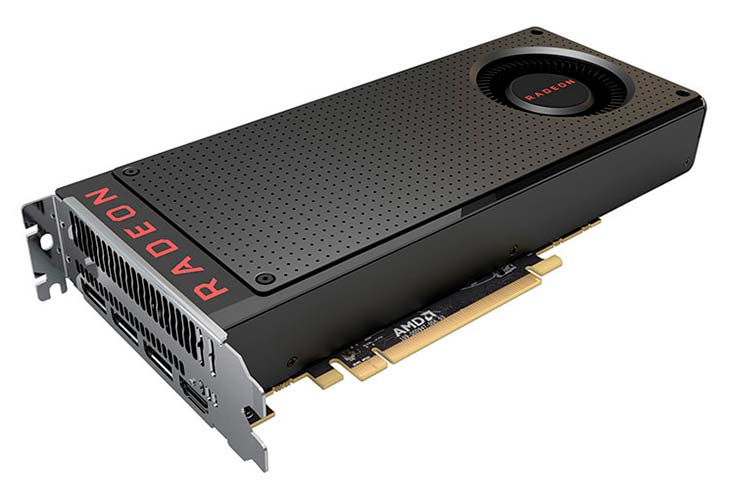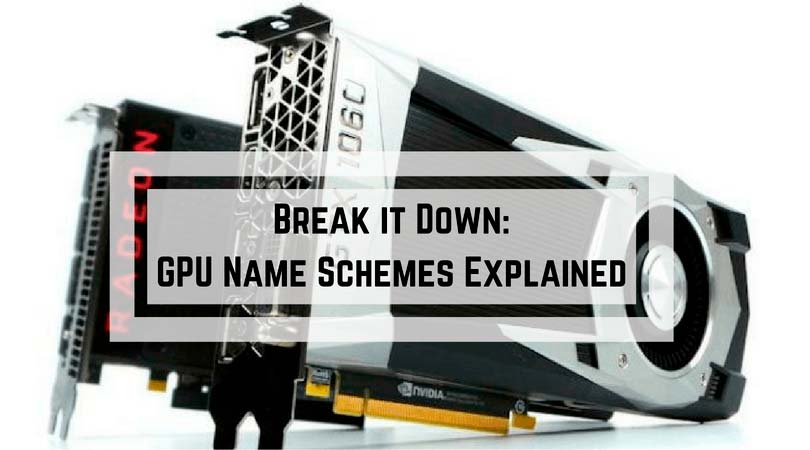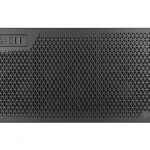Alright, let’s talk graphics cards. For those that are new to computer lingo, it can be it difficult to understand the differences and reasoning behind all the names of NVIDIA & AMD graphics cards available on the market currently. This article will focus on breaking down these names to more easily understand what it is that the jumble of words and letters mean. Our focus today is on the GeForce graphics cards and the AMD Radeon cards.
NVIDIA GeForce Graphics Cards
The easiest way to break down this naming stuff down is to relate it to something that might be a bit more common, like cars. The first thing that you notice about the car is the company brand. Just like General Motors owns Chevrolet, Cadillac, and Buick; NVIDIA owns the GeForce name.
The next part about cars is the body style. Is it a Sedan, SUV, or pickup truck? Each style can handle things a little bit differently. This is what the string of capital letters after the GeForce are. Their sedan of graphics cards has no letters after the GeForce. This version is perfect for everyday use and light video watching in HD. Nothing crazy. The SUV version is called the GeForce GT. So this card is supercharged for better HD quality, 3D movies, and entry level gaming capabilities. Now for the biggest, most heavy hitting line: The GeForce GTX. This graphics card is the ultimate GPU, and provides high performance for any gamers needs, including VR capacity. This version is the newest and most popular line on the market right now.

Now for the hard part: the numbers. The first number is always the easiest to identify because the first number is the generation number. This number is a good indicator as to how new the card is, with rare exceptions. Most of the time, the bigger the number, the better the card, unless you are jumping between models. The biggest difference in the 10 series (10th generation) is it uses a brand new architecture called Pascal, that was just launched this year.
The second half of the number is the equivalent to the specific trim of a car. These numbers usually range from 60-90, in increments of 10 and tell you how good the chip is at its job. For example, the GeForce GTX 1060 has slower memory speed and lower boost clock, and it is outperformed by the 1070 and 1080. Below is a chart of the specs for the 10 Series graphics cards from NVIDIA that are currently on the market and their current prices.
| NVIDIA | Frame Buffer | Memory Speed | Boost Clock | Price |
| GeForce 1060 | 6 GB GDDR5 | 192 GB/s | 1708 MHz | $299 |
| GeForce 1070 | 8 GB GDDR5 | 256 GB/s | 1683 MHz | $499 |
| GeForce 1080 | 8 GB GDDR5X | 320 GB/s | 1733 MHz | $699 |
| GeForce Titan X | 12 GB G5X | 480 GB/s | 1531 MHz | $1200 |
The AMD Radeon Cards
NVIDIA’s biggest competitor is AMD as most of you know, and they have a completely different naming scheme for their products. This can be very confusing for people who are trying to compare differences between cards or to upgrade from one brand to another.
The Radeon graphics cards are grouped a little bit differently from the GeForce cards, and rightly so. They don’t want to be anything like their competitor, but their naming scheme is actually not far off from NVIDIA’s. The first part of the name is Radeon R_. Following this R will dictate which market segment they are targeting. For example, the Radeon RX series is a higher end series than say the R6. Following the series name, is another string of numbers, that is very similar to the GeForce numbering. The first number indicates the generation number and the second pair of numbers is the ranking that AMD has given that graphics card in performance against the cards in the same line. The 970 will outperform the 950 and so on.

The Radeon RX series is very comparable to the GTX series, but there are some slight differences. The biggest difference is definitely the price. AMD has continued to reign as the lower price product, but some argue it’s because they are losing out on the quality that NVIDIA provides its customers. Below you will find a chart of the specs for the Radeon RX series that is currently on the market to help you compare between these AMD graphics cards.
| AMD | Frame Buffer | Memory Speed | Boost Clock | Price |
| RX 460 | 2 GB/4 GB GDDR5 | 112 GB/s | 1200 MHz | $99/$129 |
| RX 470 | 4 GB GDDR5 | 211 GB/s | 1206 MHz | $179 |
| RX 480 | 4 GB/8 GB GDDR5 | 224 GB/s | 1733 MHz | $199/$239 |
The basic knowledge of the naming schemes of both companies is extremely helpful when trying to pick which graphics card to purchase, especially when trying to upgrade. Keep in mind that some of the lower generations of cards will outperform higher generation cards depending on which series they are in. Click here for a complete list of the graphics cards hierarchy that will help you decide which card to upgrade to, and help make your buying process easier.








Is it just me or the price column for the AMD table is… Overpriced? =))
Hi Cornell! Thanks for catching that, we updated the pricing on the table, and specified how much VRAM you get for that price!
This article explains easy things. What about the naming after the main model number like ZT-P10600A-10L, ZT-P10600B-10M or ZT-P10700G-10M?? I was looking for their meaning here.
Thank you for sharing. These tips are very useful!
http://lvsazf.blog.51cto.com/